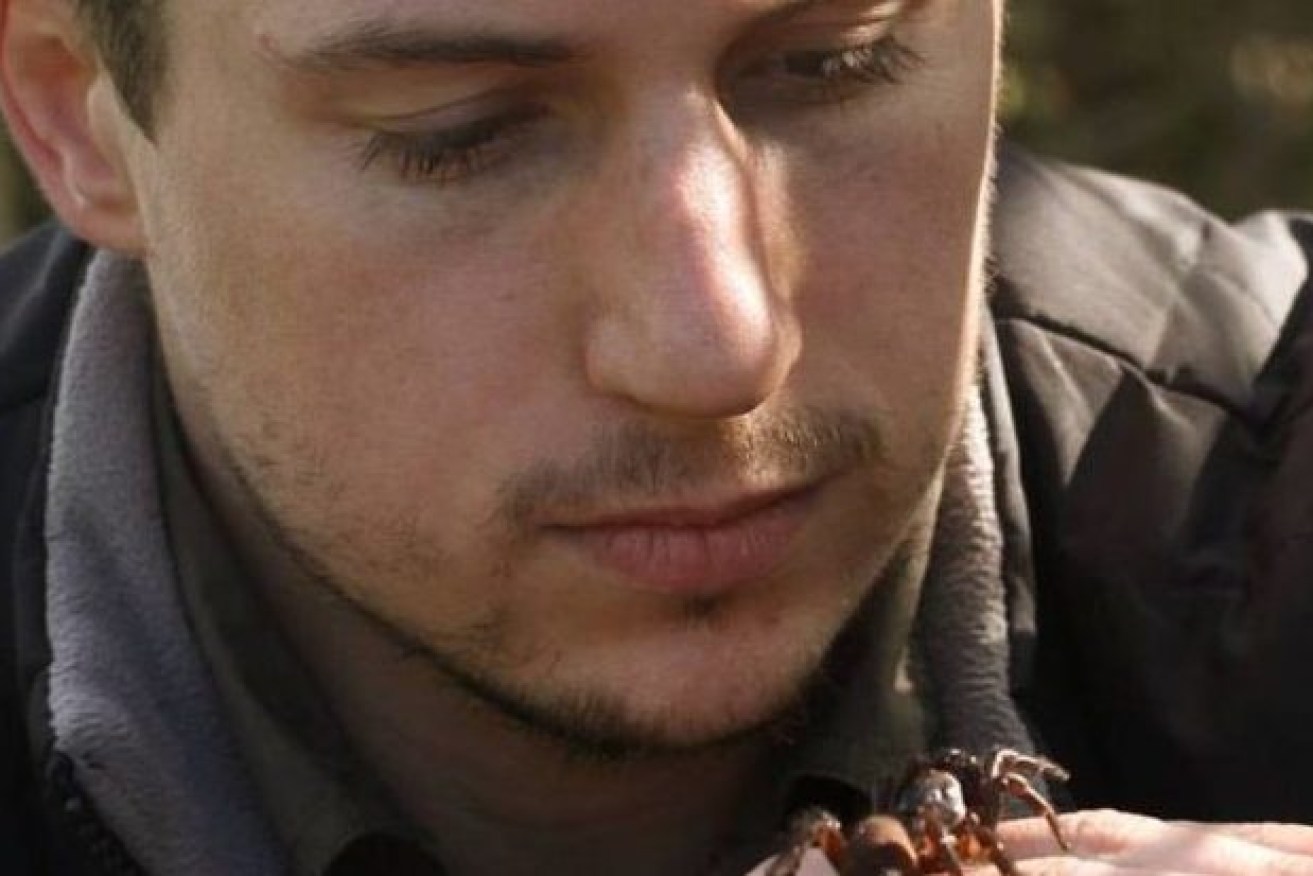Beautiful one day, crawling with ants and spiders the next
As if the pandemic threat isn’t causing enough trepidation about being out and about, nature is throwing down added challenges with the Gold Coast facing an infestation of fire ants and a new group of trapdoor spiders unmasked in Brisbane.


Dr Jeremy Wilson of Griffith University with the new trapdoor spider. (Photo: Eamon Amsters)
The new species of trapdoor spiders, that are masters at hiding, has been discovered in Brisbane by a research team from Griffith University and the Queensland Museum.
The spiders, that can grow to 4cm and deliver a painful but not highly venomous bite, build burrows hidden by camouflaged doors that have remained virtually invisible, until now.
Research lead Dr Jeremy Wilson said the newly discovered trapdoors had different DNA to regular trapdoor spiders.
“The incredibly well-hidden burrows they create were also different to other trapdoor spiders in eastern Australia, which is probably why this new group of spiders remained undiscovered in the past,” Wilson said.
The discovery, published in the scientific journal Cladistics, shows the new group of spiders is called Cryptoforis, which means “cryptic door”, in reference to the spiders’ burrows with hinge-doors made of leaves, twigs and silk.
While the emergence of the new trapdoor spiders may not present an imminent threat to residents, a new report to Gold Coast Council shows fire ants have infiltrated 41 suburbs across the city, up from the 17 suburbs the imported super pests inhabited in 2016.
Fire ants were moving from the north, taking over the city’s 81 suburbs at a rate that would see them at the tourism hub of Burleigh by 2024, according to the advice to council.
Gold Coast Lifestyle and Community committee chief, Councillor Herman Vorster said the fire ant threat, first discovered in Queensland in 2001, was outstripping the eradication program.
“There are issues that are worrying us in all sort sorts of realms at the moment, but I have to say this is one of those issues that is keeping city officers up at night, and for good reason,” Vorster told ABC.
“It could very well jeopardise the way Gold Coasters enjoy the outdoors and that really means jeopardising Gold Coast lifestyle.”
The eradication of fire ants has become a state political hot button issue.
As explained by InQueensland’s Brad Cooper last month, a report commissioned by the Queensland Department of Agriculture and Fisheries revealed the fire ant footprint has continued to expand across southeast Queensland and the density of larger hot spots has increased.
Efforts to wipe out the imported pest had proved ineffective, despite $134 million of the $411 million budget committed by the Commonwealth and state and territory governments over ten years being spent on the problem in just three years.
The report has been seized upon by the State Opposition to call for an independent review by the Queensland Auditor-General.
The State Government is responsible for managing the operation of the national eradication program, described by Chair of the National Red Imported Fire Ant Eradication Program, Wendy Craik, as “the biggest fire ant eradication program ever conducted anywhere in the world.”

This article is supported by the Judith Neilson Institute for Journalism and Ideas












